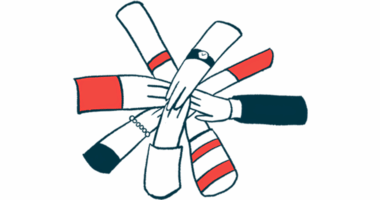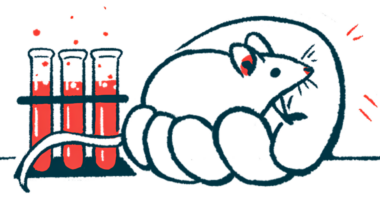Relief From My Parkinson’s Symptoms Is Elusive but Attainable
Like an oasis in the desert, moments of relief are precious for columnist Dr. C

I can’t lie to myself. When I’m having a bad day and feeling miserable, it’s extremely hard to shift toward calmness, and nearly impossible to convince myself I feel OK. Positive thinking has no way to get a foothold on my physical, mental, or emotional weather-beaten doorsteps. When I am consumed by misery, I can’t expect to find genuine, lasting relief from Parkinson’s disease by lying to myself. I can only achieve it by shifting to a state of calmness.
Then, when symptoms abate, even for just a moment, I experience relief. I don’t have to try and convince myself that it happened.
My first experiences with finding calmness amid suffering were filled with bliss, awe, and sacred reverence. Now, a little over seven years after my Parkinson’s diagnosis, I experience ordinary calmness. The days without pain have disappeared. Instead, there are days with pain-free moments, healing moments. They are the occasional oasis in the middle of a dysfunctional Parkinson’s desert.
I would like more oasis time in my life. Life is too short and getting shorter as I age. I want to squeeze the most out of every minute. But Parkinson’s has me in its vice grip. I get to wriggle free, but only for a few moments.
The self-management toolkit helps me find my way to each oasis and search for the next one. The key thing for me to remember is to stop, look around, see the desert, discern the proper course, and recalibrate my direction toward the oasis. Only then can I show up every day and put one foot in front of the other.
Self-management is a daily ritual for me. Some days are full of date palms swaying in the breeze, reflected in fresh water. Other days, I am covered with sand dust, drudging toward an endless horizon, and looking internally for that last ounce of strength.
Even with the toolkit, I have challenging times that are as arduous as crossing the endless desert. I know it’s difficult for loved ones to watch and experience the flailing and resurgence of symptoms. “You were so good yesterday,” they might remark, knowing that I’m losing the battle today. This is one thing that irks me: The toolkit doesn’t work all the time.
I can’t know if the Parkinson’s self-management toolkit will help others on their desert crossings. I do know that, overall, things have improved for me, exemplified by decreases in falling, choking, emotional outbursts, and unpredictability, and an increase in lucid time.
Falling has dropped to zero occurrences. I will still wobble on a very bad day. But if I am mindful, I can slow down and not have my foot drag.
Episodes of choking and aspiration while eating are also gone. Again, being mindful while eating and not trying to have a conversation at the same time reduce the occurrence of food getting stuck. I still dribble on my shirts, but that is the least of my concerns.
On the good days, I can control my vitriolic emotional outbursts. Intense emotions still can rage, but they are more like a brief downpour rather than a tsunami of floodwaters.
Unpredictability of symptoms can decrease when I use the toolkit in my daily routine. It’s a balance of rest, limited heavy physical activity, and no more than one major outing in a day, with rest days following for recovery. When I put time into self-management, I function much better. Throw in life’s unexpected moment, and I might be able to handle that now. Throw in several unexpected twists of fate, and my symptoms swirl around like dust devils. The toolkit can’t solve everything.
Because of the self-management practice, lucid window time has increased. In between my off periods and bad days, I have times when I can write, think, and function at a higher level. Those are the times that I find calming when I’m in my oasis. I can feel the cool breezes and realize, without a doubt, that I can make it to the next oasis.
***
A note of thanks to our readers who follow the Dr. C columns. Mrs. Dr. C and I are taking a short hiatus from column-writing during September to recharge our batteries. Our big project is finishing book two in the “Possibilities with Parkinson’s: Using the Self-Management Toolkit” print version. We will be back on Oct. 14 with new and fresh ideas about possibilities with Parkinson’s.
Note: Parkinson’s News Today is strictly a news and information website about the disease. It does not provide medical advice, diagnosis, or treatment. This content is not intended to be a substitute for professional medical advice, diagnosis, or treatment. Always seek the advice of your physician or another qualified health provider with any questions you may have regarding a medical condition. Never disregard professional medical advice or delay in seeking it because of something you have read on this website. The opinions expressed in this column are not those of Parkinson’s News Today or its parent company, Bionews, and are intended to spark discussion about issues pertaining to Parkinson’s disease.








Jan Marie Ritter
For those who want more info. on Dr. C's self-management tool kit, I'm pasting an earlier article by him as follows from 11/12/21:
By Dr. C:
"Armed with the tools of threshold management and mindful movements, I am ready to put the brakes on this accelerating Parkinson’s progression. Having tools and using them wisely are two different things. It’s the distinction between the design and delivery of my Parkinson’s self-management program. For me, the use of these self-management tools starts with intent.
"My intent is to decrease the intensity and frequency of the very worst of times, those “ugly days.” My intent is to function better, and therefore, feel better. Making this my primary intent is important because some experiences are difficult to endure as part of improved self-management. Knowing that I have a chronic, progressive condition is discouraging. Knowing that I can work through the worst of the symptoms nestles my intent to function better in a safety blanket of possibility.
"This disease often feels like wrestling with a bear, leaving wounds and extreme fatigue. I try to be gentle with my intent, framing it with genuine curiosity and kindness. It’s an exploration of how best to fit these self-management tools into my life with Parkinson’s.
"Throughout this process of putting theory into practice, I am checking in on myself and with my partner. How am I doing? I write about these techniques, but are they truly helpful?
"After several months of work on these processes, even with proper intent, I found it so hard to use these tools consistently. I would do mindful movements for a while, then forget. When I forgot, I would stumble. Or, I would aspirate during dinner, not concentrating on mindful mouth movements while chatting with friends and family and eating at the same time. Not being mindful continues to result in movement problems.
"Even though I was putting in some effort every day, I didn’t see any positive outcomes. The ugly days were still happening, and both stumbling and aspiration were still problems. I needed something more.
"I created what I call the “pause between,” which I wrote about earlier this year. To review, it’s a small, often only seconds-long pause before the start of any change in motor movement. When I move from sitting to standing, I take a pause and then start practicing mindful movement. Before I start to get out of a chair, I pause and then direct my attention fully to my body. I find my balance, feel my feet on the floor, and then start to move forward, focusing on being mindful.
"Because of the pause between, my use of mindful movement is somewhere around 90% on a good day. That has reduced both stumbles and the occurrence of ugly days.
"The pause between has also helped with threshold management, though I’m still learning how best to implement it. The difficulty lies in shifting attention from the Parkinson’s brain/body noise of pain and big emotions to the pause between for long enough to shift perception.
"This pause between helps me avoid my automatic responses to system dysregulation (the flicker effect). It gives me time to implement a new Parkinson’s self-management reaction that can replace the auto-reaction. Overall, it has been helpful with managing emotion and pain, but I can clearly see room for improvement. I still lose control. I hope constant use of the pause between can decrease the negative impact of the disease.
"The pause between helps me to take the brain path less traveled. There is always the urge to do the habitual response — the path well-traveled. The pause between provides me the opportunity to turn my back on the habit and make myself act and think in new ways.
"Overall, my efforts to implement the pause between work because of its versatility. I simply pause before doing any sequence of motor actions. I don’t have to remember every different Parkinson’s malfunction for which I need to apply mindfulness. I just need to practice the pause between at every possible opportunity. I think of it as the “starter button.” I don’t start moving until after I press the button.
"What I discovered is that over time, it became easier to use the starter button, to shift attention from habit to the pause between. The easier it was, the more likely I was to do it. The more I did it, the more I benefited.
"Significantly for me, the pause between makes it possible for me to slow disease progression. That brightens my day, and my partnership with Mrs. Dr. C, considerably."
***
Posted by: Jan Marie Ritter: A Parkinson's survivor who lives one day at a time. I was able with a great support team of family, friends and professionals, to complete my book: Did You Choose Your Parents? It was hard, but I never gave up! Your dreams can still come true! I continue to fight this terrible disease! I wish all my fellow Parkinson's friends the best of days. ...
Dr. C.
Hi Jan ~ Just want to mention that my second book, "Possibilities with Parkinson's: Developing the Self Management toolkit" should be available in a couple of months! I appreciate the support (and effort) that you gave me by referring readers to another column. I hope the new book will resonate as well.
Dr. C.
Mike
Dr. C.
You will be missed. I have discovered that even with Parkinson’s I can be more than my condition. Maybe I can be a Mentor to students who want to work more effectively with PwP’s. So I have had to take ownership of my condition before I can do
anything positive with it. Dr. C you have been an example of that for me. Particularly your Self-Management tools which help
you to get out of whatever funk you find your self in. That is impressive. Blessings, Mike
Kathleen L. Karafonda
An hopeful article, thank you.
Derek C. Marshall
Although I don't have PD, Dr. C's thoughts can easily be incorporated into anyone's life as useful adjuncts to improving the daily problems we all face, especially as the years pass and take their toll. All those "inconveniences" are inevitable as we age and we need to be constantly mindful to mitigate, as best we can, the costs of being an aging animal.
Sue
I am always in awe of the honesty shared in this column-it really shows a realistic picture of a life living with Parkinsons.
Having Parkinsons is like being bowled a curved ball -not really sure what to expect from the day but knowing it is something which can be tricky.
Over the past 8 years since being diagnosed i have been under a spell -aware of the challenges but unaware of their effect.
Having been in a bad place a year ago-I have vowed to mysef to live in the moment. Experiencing life in the moment not in the past or the future.
Having looked at the trajectory is like looking at a loaded barrel of a gun -there’s no escape -but to accept there will be challenges and focus on what is and not what isn’t -or could be allows for compatibility not resignation
I am living my life as best I can taking the good with the bad-but importantly appreciating the opportunity -which is more than can be said for other conditions.
Having Parkinsons is both weird and inspiring -such is life-the up’s and downs may make the journey a difficult one but being on the journey is what counts.
I share with everyone out there with this diagnosis -a suggestion-
We can all fall off a horse , but what is important is that we get back on again.Despair is an emotion -living is an honour.
Please make the most of your situation -rather than letting the dreaded Parkinsons take all it can .
Mindfulness and yoga is my toolkit. -may be give it a try?
Namaste.
.
Mike
Sue,
Monday I was given my 3rd Coronavirus booster. Tuesday I was very stiff. Fortunately I had Accupuncture scheduled for Wednesday. Still. stiff I was able to schedule a deep tissue massage with Linda my masseuse. Today is Thursday
and I am finally beginning to feel normal (though I am still plagued with Parkinson’s ). Dr. C has been an inspiration to me. The idea of moving my Qui was very abstract to me. Now I am beginning to feel it’s benefits. Blessings, Mike
Felicity Goulden
I have Parkinsons. I was diagnosed 11 years ago. I didn't believe it really. Major neurological diseases clearly do happen to other people but it was inconceivable that this would happen to me. I ignored it when I could and gradually accepted the reality when I couldn't. Dr C talks good sense. Self-management is essential in order to make the best of the good moments. I want to know what is iin that Tool KIt. I will start putting my own Tool Kit into words.
Dr. C.
Hi Felicity ~ I hope you will have the opportunity to look at my second book, "Possibilities with Parkinson's: Developing the Self Management Toolkit" when it becomes available in a couple of months. I have several systems in place to try to self-manage this disease and have shared these in the next book. We are all on the journey together.
Dr. C.